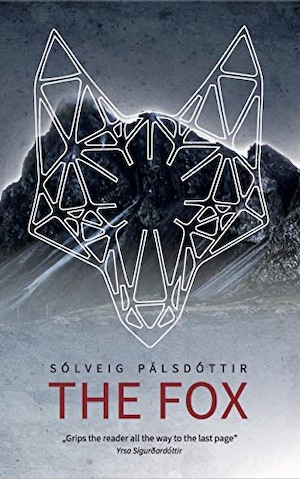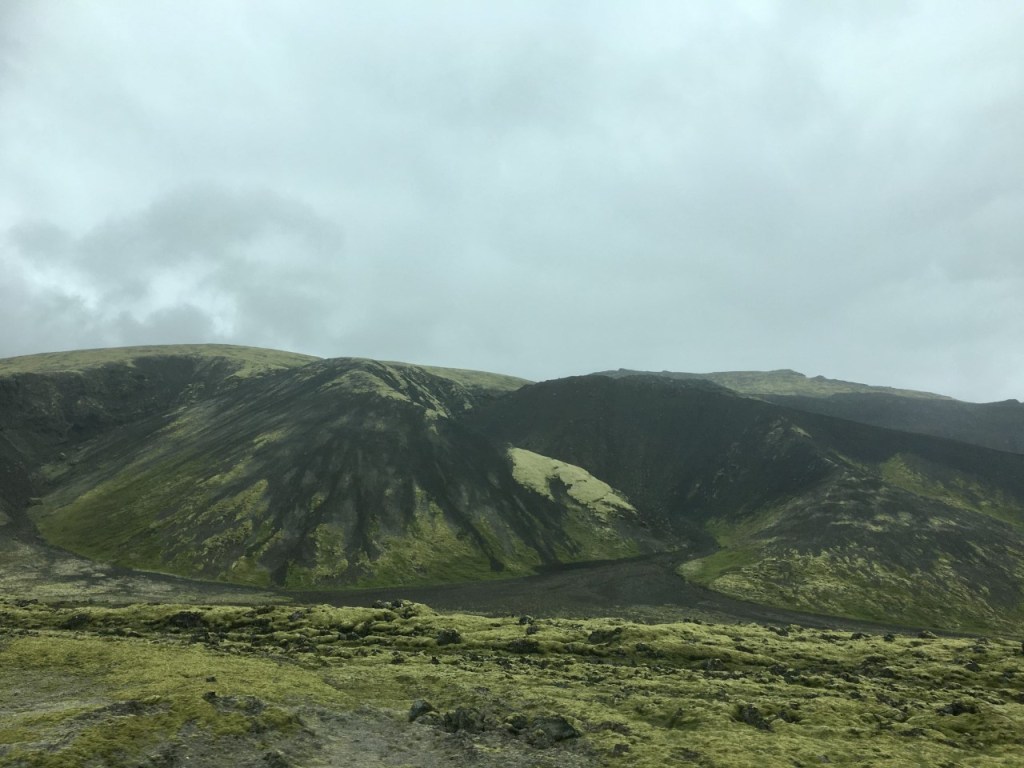Refurinn / The Fox by Sólveig Pálsdóttir
It‘s a snowy day in January when a small plane lands in a tiny town east of Vatnajökull glacier. Among the passengers is a young woman from Sri Lanka who thinks she‘s there to start a new life working at the local beauty parlour. Instead she finds herself working as a cleaner in an isolated country home beneath the looming mountains of the Eastfjords, whose jagged cliffs resemble razor blades. Her new employer is Selma, an elderly woman with a difficult past, and her son Ísak.
Detective Guðgeir Fransson is now working as a security guard in the village, after being temporarily suspended from his job at the Reykjavik Police Force pending an investigation into his alleged breach of discipline. He hears rumours in the village of the disappearance of a young foreign woman that arouse his interest and he decides to start his own investigation. It’s almost as if the woman never existed.

When Sajee Gunawardena left Colombo due to a difficult family situation and decided to travel across the world to join her sister in Reykjavik, she had no idea of the challenges that would meet her at each step of the way. New fairer life in Iceland did not materialise. All stereotypes about Asian women seemed to be thrown at her, and the fact that she had a cleft palate which caused difficulty when speaking Icelandic only encouraged some people to treat her as an uneducated simpleton. Yet Sajee, coming from a culture of respecting reincarnation and holy men, and with clear distinction between good and evil spirits, still wanted to better herself and hoped that Selma and Ísak will treat her with consideration. Her story offers one perspective in The Fox. The other comes from Guðgeir, who although demoted, disappointed with himself and feeling lonely in Höfn, takes Sajee’s peculiar situation seriously and embarks on an unofficial search for her. He appreciates beliefs in huldufólk or the hidden people but essentially he believes in another human being.
At Bröttuskriður Sajee takes it all in when her new employer Selma and the farm’s closest neighbours Karl and Marta try to explain something that often proves unexplainable, and depends on perception of reality, everyday life and own experience shaped by education or lack of it, poverty, location or family history. Each of them has a different approach to dealing with the spiritual world and the supernatural or mysterious concepts such as huldufólk.
According to Karl they ‘are people like you and me. Except that they’re taller, more dignified and in every way more handsome that we humans are. They dress in shades of blue and they live in the rocks. That’s not in every rock, but just in some places. But we don’t see them. At least, most of the time we don’t, because we humans have our limits in so many ways. Our senses are very poor unless they’re carefully trained. The hidden people are usually good, unless they’re mistreated. If you harm them in any way, they’re merciless in getting their own back. Karl dismisses the idea of elves who don’t seem to exist: They’re not elves, because that’s just rubbish. Trolls don’t belong in his landscape, either. Marta disagrees with her husband’s musings designed to frighten others: These are just old folk tales that people told in the dark before we had electricity. Back then people had to have ways of explaining things they didn’t understand.
Selma’s take is the most profound and primeval. As the story unravels it becomes clear that she considers that the hidden people to have a higher consciousness and can be both very cruel and without a shred of mercy. Sometimes they come to our aid when it’s needed, but if they’re wronged then their revenge can be bitter. Yet they aren’t spirits. This last aspect was inconceivable to Sajee being brought up in a tradition of reasonable gods and spirits: thoughts of the hidden people in the rocks above the farm came vividly to mind. Karl had talked about the elf woman who could drive people mad, or even make then disappear. Yesterday she had watched as Selma had hobbled up the largest of the rocks, taking with her a pot containing the remnants of a meat soup that she tipped out into the snow. Then she had spread her arms wide and yelled at the sky above. She was convinced that the old woman had been making an offering. She herself could never use a part of an animal as an offering, and any hidden people who took meat as a sacrifice had to be truly terrible.
Many tales of the hidden people demonstrate that they help people in trouble, and also can also make unpleasant people disappear into the rocks, and when doing an uncomfortable task, they leave behind a mark difficult to erase.

Various aspects of the ancient spirit world are strongly anchored in Icelandic tradition, and many artists and authors draw on these tales. Hidden people featured in Arnaldur Indriðason’s Shadow District and in Yrsa Sigurðardóttir’s My Soul to Take. In Lilja Sigurðardóttir’s Betrayal another side of the spirit world is at play, different from the Icelandic outlook yet equally important to the person who believes in it.
Sólveig Pálsdóttir combines elements of Nordic and Eastern culture and folklore, and places them in the contemporary reality of the contrast between native Icelanders and immigrants. She writes passionately and with verve, weaving fascinating strands of modern harsh realism and ethereal atmosphere into a captivating psychological portrait of individuals locked into isolation, trauma and mental health. Her passion for the main characters shines throughout the novel, with the titular chained fox representing not just physical shackles but restrains of the mind as well.
The Fox, brought to the English readers by the translator extraordinaire Quentin Bates and the brave new adventurous publisher Corylus Books, is for all those who are intrigued by the Icelandic mythology and history, and who enjoy exciting twisty tales, but most of all want to become familiar with Pálsdóttir’s writing. It is a rare gem.

Pingback: Huldufólk, elves and trolls? | Nordic Noir
I love this post
LikeLiked by 1 person
Thank you so much!
LikeLike
Pingback: Books of 2020 – Nordic Lighthouse
I loved this book. Totally got the references to the ‘other folk’ and understood them. So many stories of the fae on Skye.
LikeLike
Pingback: Silenced by Sólveig Pálsdóttir – Nordic Lighthouse
Pingback: Jólabókaflóð – The Christmas book flood, part 3 – Nordic Lighthouse
Pingback: Harm versus trust and sense of security. – Nordic Lighthouse
Very thoughtfful blog
LikeLiked by 1 person
That’s so kind of you to say. Thank you 🙂
LikeLike
Hey there! Would yoou mind if I share yojr blg with
myy facebok group? There’s a loot of folks thatt I
think woud really appfeciate your content. Please leet me know.
Thank you
LikeLike
Pingback: Sólveig Pálsdóttir: ‘Books that influenced me’ – Nordic Lighthouse